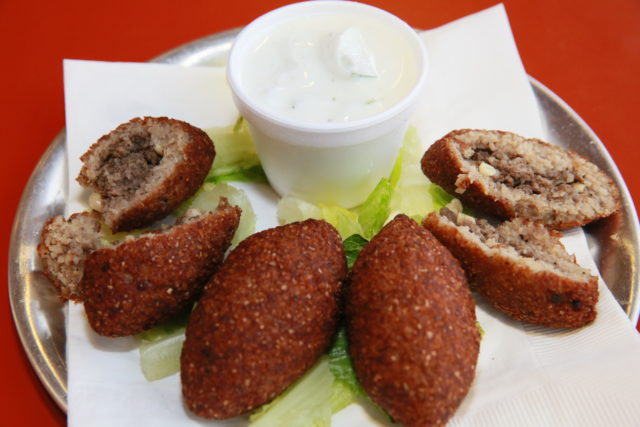
Bear with me through a very abbreviated history of Lebanon.
Situated in a region the Hebrew Bible calls Canaan — the land just west of what we now call the Cradle of Civilization — Lebanon understandably has a rich history.
Phoenician, Egyptian, Greek, Persian, Roman, Arab, Crusader and Ottoman ruins are scattered throughout the diverse geography of the country. The lush Bekaa Valley splits Lebanon’s mostly mountainous terrain between east and west, with its westernmost boarder overlooking the Mediterranean Sea.
Those ruins tell a story about Lebanese cuisine as well. The country’s food culture has roots thousands of years deep, tracing back to Roman and Phoenician rule. When the Ottoman’s took control of Lebanon from the early 16th to the early 20th century, they left their culinary mark, introducing contemporary staples in the Lebanese diet such as lamb, grape leaves and filo desserts.
France took control of Lebanon after World War I and brought its rich cuisine to the Levant country, making flan and croissants common foods.
Today, Lebanese food is classified as Mediterranean cuisine, which is a pretty broad categorization including several countries in Northern Africa, other Levant countries, Greece, Turkey, Italian, French and Spain.
This is all pertinent to a discussion about the fare at Mumtaz Mediterranean Food in Lafayette, since owner (and longtime Boulder County restaurateur) Hiam Jamell hails from the mountains of Lebanon.
Mumtaz is an inconspicuous eatery just off 287, tucked between a carpet store and an insurance agency, so you already know it’s good (See: The Shopping Center Rule). Inside the atmosphere is welcoming, with lots of natural light and warm hues of yellow and orange. Orders are placed at the counter, and it’s more than likely that whoever is working the register will kindly and expertly give you a rundown of the menu. It’s helpful, because while it’s not an overwhelmingly large menu (see: The Appropriately Sized Menu Rule), there are plenty of options, some of which you may not be familiar with.
Well, I wasn’t, anyway.
One such treat is the kibbeh, a Levantine dish of seasoned ground beef (in this case, but it’s often made with lamb or camel meat) mixed with pine nuts and onion, and covered in a crispy shell of cracked bulgar wheat.
The result is a savory, football-shaped fritter. For optimal results, dip generously in cucumber sauce.
The seasoning in kibbeh can, as with most dishes, differ from region to region, country to country. At Mumtaz, the kibbeh offered strong Middle Eastern flavors, with hints of cinnamon, nutmeg, clove and allspice. For a Westerner, the flavor is just vaguely holiday-like in nature.
Nothing on the menu at Mumtaz is to be missed: Enjoy falafel, hummus, baba ghanoush, gyro, dolmas and spanakopita, but save room for a slice of baklava (a genuine treat with its sweetness well balanced against the bitterness of the walnuts).
For the record, the word mumtaz means “the distinguished,” “the best” or “excellent” in Arabic.
Couldn’t agree more.
Mumtaz Mediterranean Food. 588 U.S.287, Lafayette, 303-926-1400.














